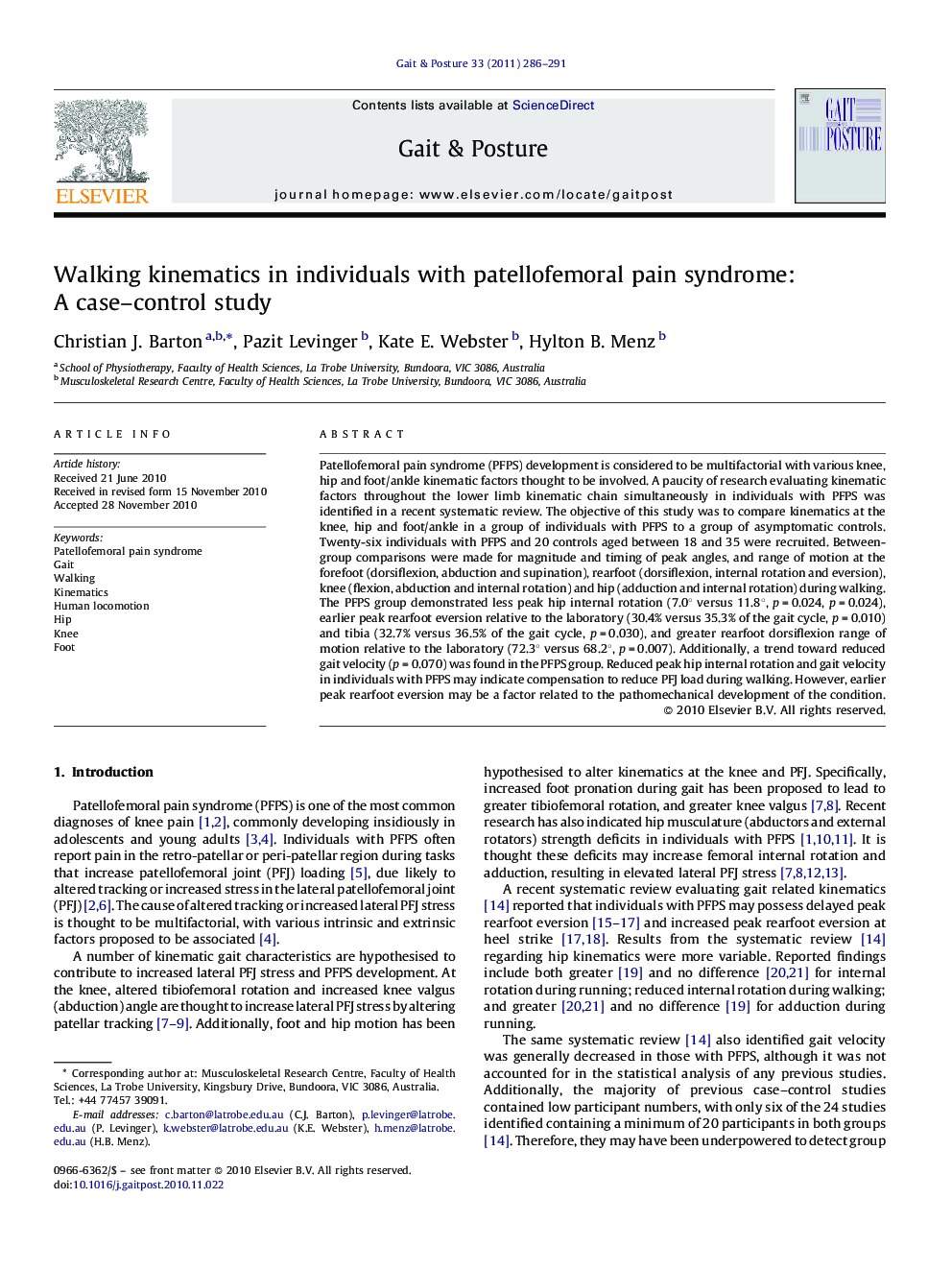| Article ID | Journal | Published Year | Pages | File Type |
|---|---|---|---|---|
| 6208266 | Gait & Posture | 2011 | 6 Pages |
Patellofemoral pain syndrome (PFPS) development is considered to be multifactorial with various knee, hip and foot/ankle kinematic factors thought to be involved. A paucity of research evaluating kinematic factors throughout the lower limb kinematic chain simultaneously in individuals with PFPS was identified in a recent systematic review. The objective of this study was to compare kinematics at the knee, hip and foot/ankle in a group of individuals with PFPS to a group of asymptomatic controls. Twenty-six individuals with PFPS and 20 controls aged between 18 and 35 were recruited. Between-group comparisons were made for magnitude and timing of peak angles, and range of motion at the forefoot (dorsiflexion, abduction and supination), rearfoot (dorsiflexion, internal rotation and eversion), knee (flexion, abduction and internal rotation) and hip (adduction and internal rotation) during walking. The PFPS group demonstrated less peak hip internal rotation (7.0° versus 11.8°, p = 0.024, p = 0.024), earlier peak rearfoot eversion relative to the laboratory (30.4% versus 35.3% of the gait cycle, p = 0.010) and tibia (32.7% versus 36.5% of the gait cycle, p = 0.030), and greater rearfoot dorsiflexion range of motion relative to the laboratory (72.3° versus 68.2°, p = 0.007). Additionally, a trend toward reduced gait velocity (p = 0.070) was found in the PFPS group. Reduced peak hip internal rotation and gait velocity in individuals with PFPS may indicate compensation to reduce PFJ load during walking. However, earlier peak rearfoot eversion may be a factor related to the pathomechanical development of the condition.
